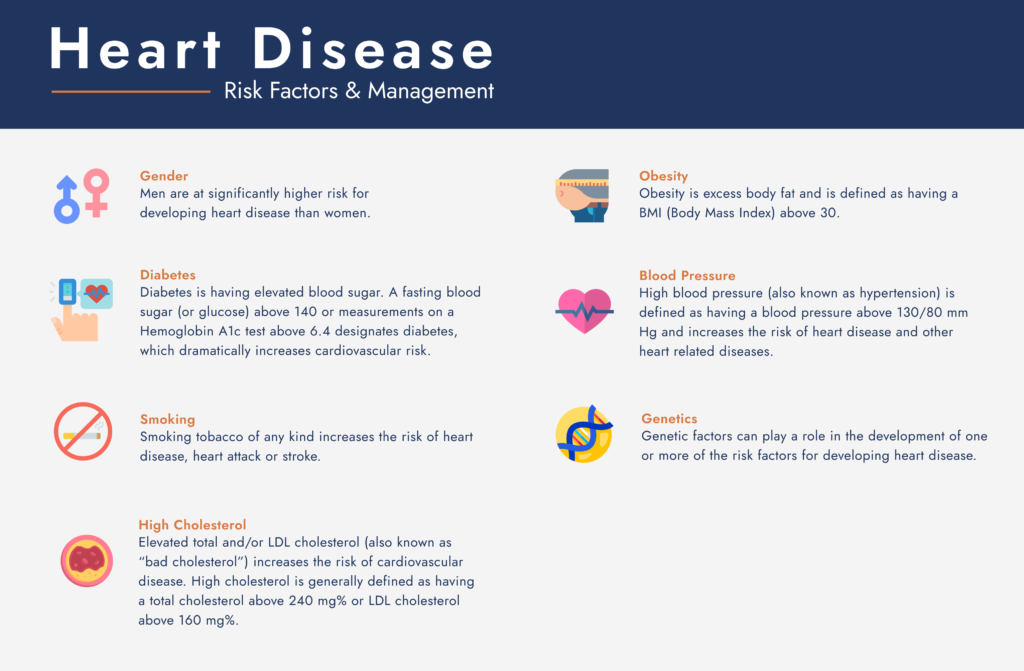Did you know that cardiovascular disease, or heart disease, is the leading cause of death in the United States, accounting for nearly 1 in every 3 deaths? In fact, every day, about 2,300 Americans die of Heart Disease, with 720,000 individuals having their first heart attack every year.
While these numbers are astounding, we know that heart disease can be evaluated and predicted through identifying important risk factors. By measuring these risk factors and analyzing their potential impact, we are able to estimate a person’s risk and then, if necessary, intervene in order to mitigate (not eliminate) the chances of adding to the statistics of heart disease.
What are the risk factors of heart disease?
There are 7 primary risk factors that medical professionals look toward when evaluating an individual’s risk for developing heart disease. They are:

Some other emerging risks that are important to consider for the development and acceleration of heart disease are inflammation and hormonal imbalances. Stress, especially when chronic, can exacerbate the risk factors mentioned above, as a prolonged stress response can act as a trigger for problematic inflammatory processes in the body. Imbalances in hormones can also negatively affect your chances of developing a range of conditions, including heart disease.
It is also important to note that these risk factors are not stand-alones, as interaction between them can put an individual at a greater risk of heart-related issues, among other conditions. The good news? There are tangible ways to manage your risk!
How to manage your risk
Your annual physical exam is a yearly opportunity to detect disease early, assess your risk of future disease, and identify risk factors you can address and improve to mitigate health risk as a whole. Measuring your cholesterol and other lipids (types of fat molecules in the blood) is a crucial part of that assessment, and offers an opportunity to dramatically reduce the changes of death and disability due to heart attack or stroke.
What can Hoag do for me?
Oftentimes, a routine health exam (or yearly physical) with your primary care doctor amounts to little more than a brief and simple checkup. A comprehensive exam, like those offered by Hoag Executive Health, adds far more testing and a greatly expanded lab panel that always includes a measurement of advanced lipids in the blood. This ensures the greatest chance of preventing heart disease.
Schedule your Hoag Executive Health Assessment today to gain more insight into your health than ever before.

